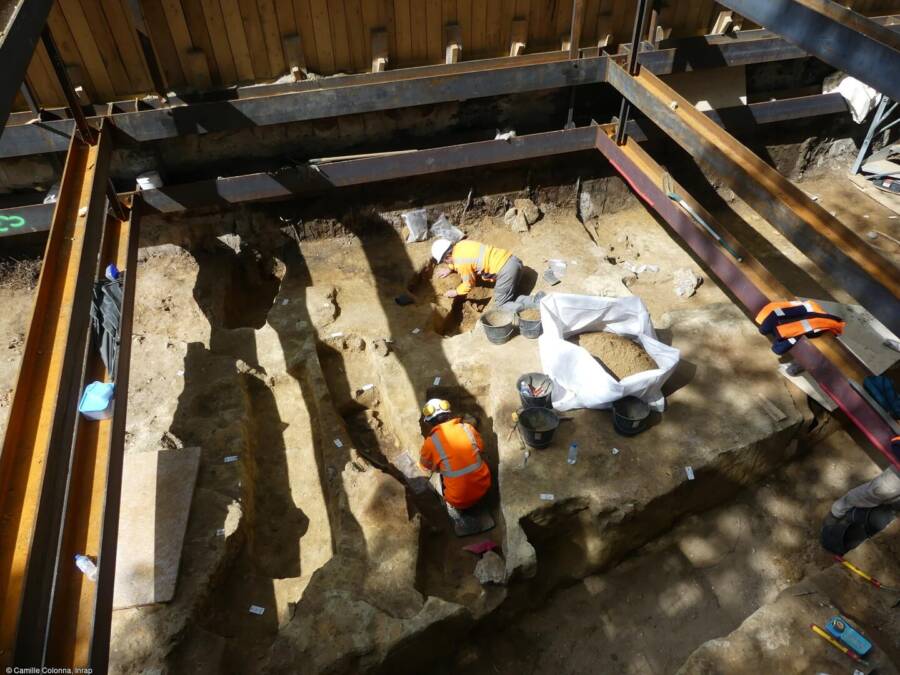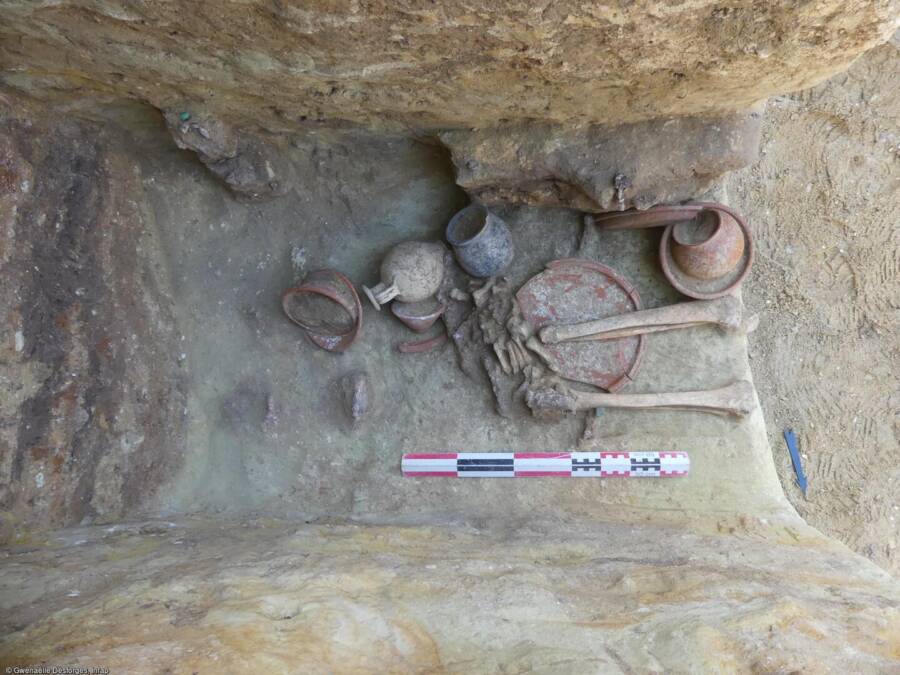Archaeologists say the necropolis is filled with skeletons and artifacts from the ancient Parisii people of Lutetia, the city that eventually became Paris.

Camille Colonna/INRAPExcavation crews unearth skeletons and artifacts from the ancient necropolis.
Archaeologists have uncovered a 2,000-year-old necropolis under Port-Royal, a busy train station in Paris. The burial ground dates back to the Gallo-Roman city of Lutetia, Paris’ precursor, offering new insights into life in ancient France.
France’s National Institute of Preventive Archaeological Research (INRAP) first came to the site following an announcement that a new exit would be built at the station.
French archaeologists had previously speculated that the long-lost Saint Jacques necropolis, believed to have been the largest Lutetia burial site, was geographically close to the train station, and they wanted to verify that the site was clear before construction took place.
The preventative dig revealed that the necropolis had, in fact, been there all along. According to a press release from INRAP, after digging a series of trenches measuring over 200 square meters (about 656 square feet), the team uncovered 50 graves containing skeletal remains and a collection of ancient artifacts dating back to the 2nd century C.E.
All 50 bodies belonged to members of the ancient Parisii, a people who once inhabited ancient France during the 2nd century C.E. and were very skilled in agriculture, metallurgy, and trading. While living in their capital of Lutetia, the ancient Parisii tribe fought against Roman conquest but eventually fell under Roman control in the 1st century B.C.E.
After finding the necropolis in such a busy location, archaeologists and historians wondered how construction crews might have missed the necropolis when building Port-Royal train station in the 1970s.
There is also evidence that in the 1800s, explorers and archaeologists located sections of Saint Jacques and removed any items considered to be valuable. All other items were left behind and eventually lost to history. This most recent excavation of the necropolis not only marks its rediscovery, but has also uncovered sections that no person had seen since antiquity.
Researchers believe that the unearthed skeletons once lay in wooden coffins, as evidenced by the nails left behind in their graves. Additionally, the team found artifacts like ceramic dishes, glassware, jewelry, traces of shoes, and other items that ancient Parisiis may have placed in the graves as offerings.

Gwenaëlle Desforges/INRAPThe necropolis contained artifacts like pottery, glassware, and jewelry.
According to the IFRAP release, archaeologists even found the whole skeleton of a pig in an offering pit — likely an animal sacrifice.
Curiously, the archeological team also uncovered a human skeleton with a coin in its mouth, suggesting the Parisii people may have adhered to ancient Greek understandings of the afterlife.
The practice of placing a coin in the mouth of the deceased, also called “Charon’s obol,” comes from the ancient Greek myth of the ferryman of the River Styx, Charon. In order to cross the Styx to get to the underworld, a traveler would have to pay the Charon a bribe. Placing a coin in the deceased’s mouth would guarantee that they could afford this fare.
Currently, the archaeological team is working to excavate the entire necropolis in hopes of making make even more astounding discoveries. The next steps include studying the DNA of the bodies to get a better understanding of the ancient Parisii’s diets and lifestyle.
“This will allow us to understand the life of the Parisii through their funeral rites, as well as their health by studying their DNA,” INRAP anthropologist Camille Colonna said, as reported by CBS.
INRAP president Dominique Garcia stated that the find is very important because the ancient history of Paris was “generally not well known.” The necropolis opens “a window into the world of Paris during antiquity,” Garcia explained.
After reading about the ancient necropolis under a Parisian train station, discover the woman buried in a seemingly all-male grave 6,500 years ago. Then, read about nine unsolved ancient mysteries that still baffle historians today.





